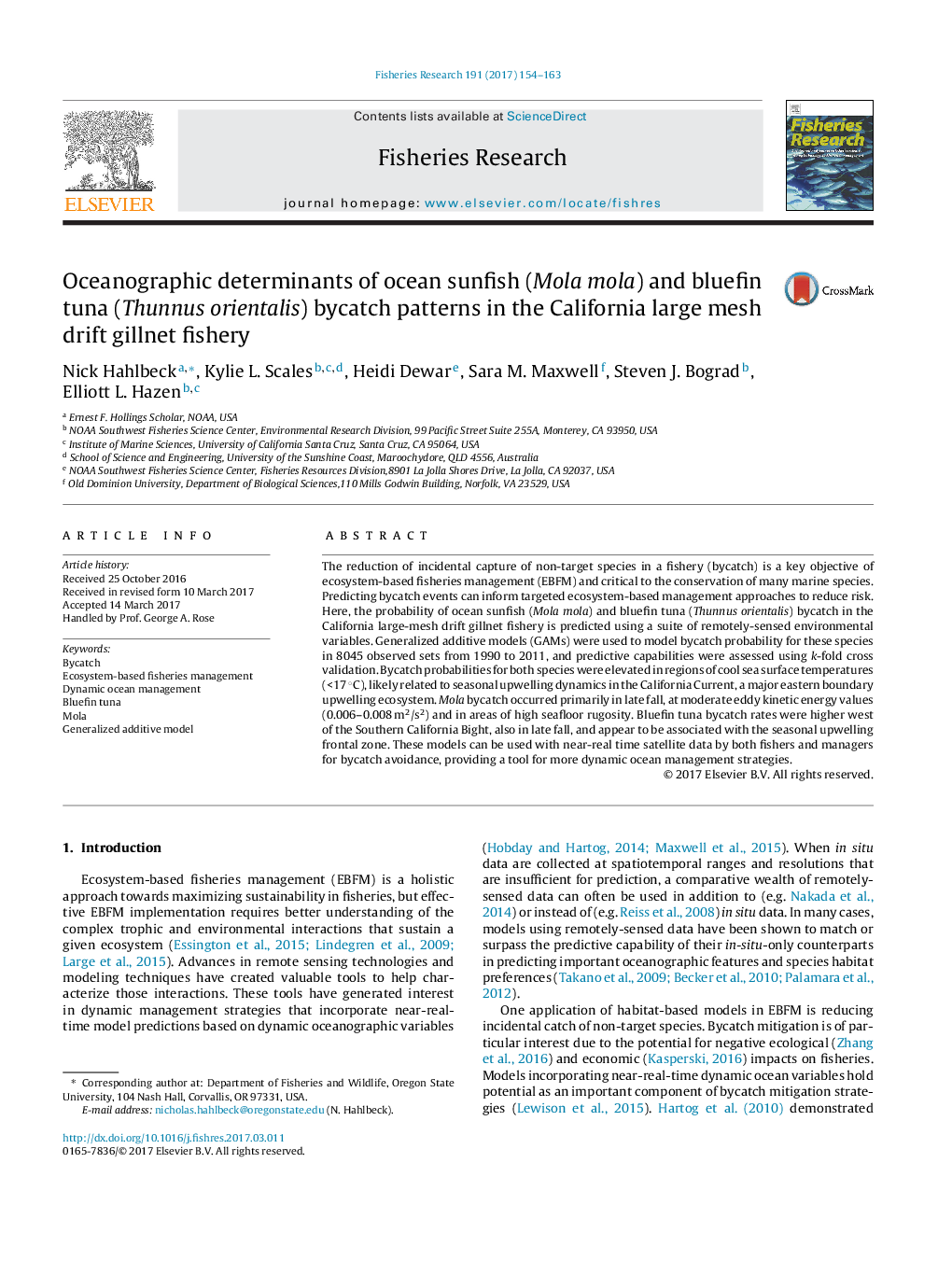| Article ID | Journal | Published Year | Pages | File Type |
|---|---|---|---|---|
| 5765626 | Fisheries Research | 2017 | 10 Pages |
Abstract
The reduction of incidental capture of non-target species in a fishery (bycatch) is a key objective of ecosystem-based fisheries management (EBFM) and critical to the conservation of many marine species. Predicting bycatch events can inform targeted ecosystem-based management approaches to reduce risk. Here, the probability of ocean sunfish (Mola mola) and bluefin tuna (Thunnus orientalis) bycatch in the California large-mesh drift gillnet fishery is predicted using a suite of remotely-sensed environmental variables. Generalized additive models (GAMs) were used to model bycatch probability for these species in 8045 observed sets from 1990 to 2011, and predictive capabilities were assessed using k-fold cross validation. Bycatch probabilities for both species were elevated in regions of cool sea surface temperatures (<17 °C), likely related to seasonal upwelling dynamics in the California Current, a major eastern boundary upwelling ecosystem. Mola bycatch occurred primarily in late fall, at moderate eddy kinetic energy values (0.006-0.008 m2/s2) and in areas of high seafloor rugosity. Bluefin tuna bycatch rates were higher west of the Southern California Bight, also in late fall, and appear to be associated with the seasonal upwelling frontal zone. These models can be used with near-real time satellite data by both fishers and managers for bycatch avoidance, providing a tool for more dynamic ocean management strategies.
Related Topics
Life Sciences
Agricultural and Biological Sciences
Aquatic Science
Authors
Nick Hahlbeck, Kylie L. Scales, Heidi Dewar, Sara M. Maxwell, Steven J. Bograd, Elliott L. Hazen,
